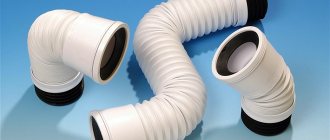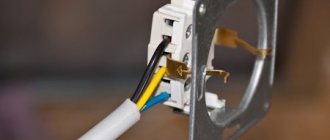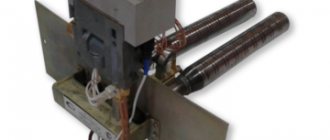Many have seen decorations on the roofs of houses, which are installed at the highest point and look like figures of animals, characters and other objects - this is a weather vane. Recently, its purpose has been considered more decorative, but it can also perform useful functions.
What is a weather vane?
It is fashionable to decorate the roofs of modern buildings with interesting elements, such as a weather vane - a meteorological instrument that can indicate the direction of the wind. Translated from German “flügel” this is a wing. Some models of weather vanes measure its speed, while others perform useful functions of increasing draft in chimneys. In the old days they were installed on the masts of ships to determine the direction of the wind. The naval charter of 1720 mentions the word “flugel”. Later, the structures began to be hung over the roofs of buildings on long poles.
What does a weather vane look like?
The purpose of a weather vane is to turn towards the wind. The most common material for the manufacture of meteorological pointers is steel. It is interesting to know what a weather vane consists of; for example, it can be structurally divided into several parts.
- A flag
is the main element of a weather vane, which can carry a certain meaning and look whatever you want. In ancient times, they depicted the coats of arms of noble families or objects indicating the type of craft profession, so that from afar one could understand who lived in this house. - The axis
is a metal rod 40-50 cm long, onto which the flag is attached. - Pointers
are rotating rods that rotate freely around an axis, indicating the cardinal directions. - The base of
the weather vane looks like a part of a pipe rising above the roof. - A bearing
is an important part of any weather vane, the performance of which determines the serviceability of the entire device. It is best if it is hidden from the effects of rain and snow.
How does a weather vane work?
Many people believe that a weather vane is the simplest device, but in fact this is a misconception. The operating principle is based on physical phenomena. The flag performs the functions of a sail; it “catches” energy from the movement of the flow of air masses and begins to rotate. Thanks to the asymmetrical structure and a mandatory element in the design - a counterweight, the weather vane does not move chaotically, but turns strictly in the direction of the wind flow. If you attach a metal wire to it and bury it in the ground, it will act as a lightning rod.
Device
It’s not worth starting to make a product from scratch, otherwise the result may be sad. Read the relevant literature in advance, draw up a detailed drawing, purchase suitable materials (by the way, you should not skimp on the latter).
Consists of the following parts:
- The base (housing) into which the axle is inserted. The housing is mounted on the chimney pipe or roof.
- Bearing. It is fixed in the body. Thanks to the bearing, the axis rotates without interference under the influence of gusts of wind.
- Axis. It is placed strictly vertically inside the housing through a bearing. To ensure smooth rotation, buy a bearing and axle of the same diameter.
- Axle cap. It can be either in the shape of a circle or in the shape of a cone. It protects the base from moisture and also performs a restrictive function.
- Checkbox. It is hooked onto the axis of the weather vane. It is a medium-sized blade that indicates which direction the wind is blowing. The flag can be given any shape: bird, animal.
- Counterweight. Located on the opposite side of the flag. Necessary for its balancing.
History of the creation of the weather vane
Since ancient times, high towers and ridges on the roofs of houses have been decorated with beautiful elements indicating the direction of the wind. It is interesting for all history buffs to know what this weather vane is and when it was invented. More than 2000 years ago the first weather vane appeared. There is a known fact about the astronomer Andronikos, who erected a metal marker on the Tower of the Winds, located in Athens, Greece. Particular significance was attached to this weather vane - it pointed to one of the eight gods who controlled the weather. Later, weather vanes began to be installed on spiers in marinas, and later on the roofs of houses.
How to make a swivel unit
You will need one steel ball, in which a small hole is made using a drill. In this case, the cover must be attached by welding to a section of a pre-prepared pipe (the size is determined by the drawing).
In order for the arrow tubes to fit more closely to the ball, recesses are drilled on both sides. It is to them that you will need to weld the two ends of the arrow in the future.
- A DIY mailbox is a beautiful decoration and a useful addition to a suburban area
A house for children is a place where a fairy tale becomes reality, we create it ourselves
Bridges for a dacha - a picturesque element of the landscape in a suburban area
The final stage will be attaching a rod to the ball, the basis of which will be a profile pipe and a partly round tube.
What is a weather vane for?
In ancient times, weather vanes were used to determine whether a ship should enter a port. If the metal sign was turned towards land, it was worth preparing for an influx of merchants who would sail in their ships with goods. Today, a weather vane is a device for measuring wind speed and making weather forecasts, warning the population about upcoming changes and atmospheric disturbances. It is installed above chimneys to protect them from air currents, and the vibrations created by a garden weather vane with a propeller repel rodents and birds.
What is the difference between a weather vane and a weather vane?
Some people do not understand the difference between a weather vane and a weather vane, because these names have a common root. A weather vane on the roof is a meteorological indicator, a decorative element that follows the direction of the wind. The weather vane is a rotating device itself, mounted on a spire. In some publications you can find another definition of the word “wind vane” - this is a pipe that is installed on the chimney and helps the smoke escape strictly in the direction of the wind.
Types of weather vanes
Making your home special and different from others is the desire of many modern owners. Decorative elements in the garden, well-groomed territory, flower arrangements, a weather vane on the roof - all the little things make up a single picture and make the house unique. Which option to choose is not an easy decision, and it is important to understand what types exist. According to their purpose, metal signs are divided into several groups:
- meteorological;
- Wild weather vanes
- weather vanes with propellers for chimneys;
- decorative.
Meteorological weather vane
Anemorummeters are a special type of weather vanes, which are accurate and verified meteorological instruments. Forged from a special metal alloy and balanced, they react to the slightest breath of wind, indicating its direction. There are devices equipped with special caps and electronic sensors that are capable of instantly transmitting readings remotely via the Internet to meteorological stations for processing by specialists and making weather forecasts.
Weathervane Wilda
Certain types are used for precise measurements. Not everyone knows what it is - a Wild weather vane, which was invented by a Swiss physicist and research scientist in the 19th century. Thanks to its simple design, this device for creating synoptic maps has not lost its relevance today. There are two types of such a weather vane - a device for determining wind speeds of up to 10 m/s and a Wild weather vane for measuring wind speeds of more than 10 m/s. The device includes the following parts:
- Eight pins that are installed at the cardinal points.
- Arrow indicating wind direction.
- A frame with a board that deviates at a certain angle in accordance with the wind speed. It can be light or heavy depending on the type of weather vane.
Weather vane on the chimney
An object that protects the chimney from foreign objects is also called a protective cap, chimney, or umbrella. Such elements are installed on the outlet pipes of ventilation ducts in private buildings. Additional functions of the weather vane deflector:
- protection from snow and water;
- reliable barrier against various debris;
- improvement of reverse draft in the pipe;
- decorative decoration on the roof of the house.
Decorative weather vane
Many houses abroad and in our country began to be decorated with decorative weather vanes. Made to order from professional craftsmen or with your own hands, they will decorate your home for decades and serve as a talisman. A weather vane in the wind is a sign of prosperity and successful life in many countries. Even today, elaborate decorative decorations for the roofs of houses are considered symbols of family well-being, the family nest, and magical power.
Horizontal spinner
One of the fastest ways to make a weather vane with your own hands from a plastic bottle is to make a horizontal pinwheel. To do this, you need to take an empty 1.0- or 1.5-liter bottle, preferably a colored one. On top, at the beginning of a flat surface, mark a strip of equal width. The distance between them should also be the same. We cut along the resulting lines to the end of the flat part of the bottle, to the bottom rim.
Next, we make cuts in the strips from below, one at a time. We leave one strip in place, and the next one needs to be cut from the bottom and folded in the opposite direction. It is better to round the edge of the strip. Next, we make a hole in the lid for the metal rod. We insert one part of it into a wooden block, and the other into the bottle through the cap. We decorate the blades as desired.
Weather vane shape
The meaning conveyed by the image of a flag on a weather vane is very important to some people. Some people use decorative elements to emphasize the meaning of their surname, while others emphasize character traits and adherence to specific principles. You can decide which weather vane to install by considering the meanings of popular options:
- The rooster weather vane
is a symbol of dawn, sunrise, rebirth, a powerful amulet that drives away evil forces. - The wolf weather vane
demonstrates the honesty, sharp mind and devotion of family members. - A weather vane cat
will emphasize the independence of the owners and freedom of decision-making. - Weathervane dog
- friendliness, strength of tradition, loyalty to family. - Weathervane horse
- speed of reaction, desire to live here and now. - The weather vane of a ship
is an indicator of romanticism and the desire for new experiences.
Choosing a figurine
Studying photos of weather vanes, we can conclude that the choice of flag is most important. Many believe that it has not only decorative functions, but also a certain meaning.
When and how to prune roses in autumn for winter: tips and step-by-step instructionsA decorative cart is a beautiful option for landscape decoration, see options and ideas on how to make a cart with your own hands (photos and videos)
- A beautiful decorative mill is a way to decorate your site in an original way without much effort, see how to make a mill with your own hands!
Before choosing a figure, we suggest that you familiarize yourself with the most popular types of weather vanes:
- It is believed that the rooster protects against evil spirits.
- The cat provides comfort in the house.
- The stork gives residents mutual understanding.
- Leo shows the strength of the owner.
- The eagle protects housing from ill-wishers.
- The owl is an indicator of wisdom.
- Goose means order in the house.
- The chimney sweep brings good luck.
Vane material
The most durable signs are those made of copper. Two symmetrical halves, fastened together, will last for many years. Forged metal weather vanes must be treated with anti-corrosion agents, because the decorative elements are located outdoors and are exposed to weather conditions: snow, rain, temperature changes. Wooden and plywood weathervanes are not very durable and must be constantly painted and renewed. Plastic structures are not considered practical due to their light weight and fading in the sun.
Drawing
Having chosen the type of flag, you need to draw a weather vane. For beginners, it is better to choose the simpler option.
The drawing is made on paper and cut out of metal or other material used. You should not make the flag larger than 50 cm to avoid breaking it in strong winds.
Weather vane size
When planning to install a weather vane on the roof of a house, it is very important to decide what size the decorative element should be. The main condition is that the product must be clearly visible. This parameter depends on the height of the building.
- If the height of the house is no more than 3.5 m (gazebo, garage, courtyard building), it is recommended to install the weather vane at a height of up to 600 mm.
- On a one-story house, the height of which together with the roof is about 6 m, a weather vane up to 800 mm in size should be installed. It will be clearly visible from afar.
- On two- and three-story houses with a height of about 9 m and above, it is recommended to fix large weather vanes with a size of more than 800 mm. It’s difficult to find them in stores, but you can make them yourself or contact specialists who will make any product to order.
Installation Rules
Any type of weather vane should be installed at the highest point of the roof (on the chimney cap or on the ridge). For maximum accuracy of readings, the device should be located at a height of 10 to 12 meters from the ground. This will ensure free flow of air flow to the weather vane. To correctly orient it to the cardinal points, you need to use a compass.
The weather vane is installed on a steel pipe, which is placed on a vertical fitting. It is important to ensure that the device is installed strictly vertically.
The position of the weather vane is adjusted using special fasteners. Reliable installation of the structure is ensured by additional metal strips on the sides of the support.
New types of weather vanes are equipped with a reliable rotation unit, including 2 closed metal-graphite bearings. They increase the device's sensitivity to light winds.
It is necessary to take measures to prevent moisture from entering the rotation unit. This can be achieved by installing a special cap over the bearing sleeve.
A metal structure on the roof of a building can serve as a lightning rod. To do this, it is necessary to ensure its grounding in accordance with the “Instructions for the installation of lightning protection of buildings and structures.”
DIY weather vane
The simple design allows you to make it yourself. If a home craftsman is thinking about how to make a weather vane, you should use simple instructions. Materials and tools:
- a large sheet of metal measuring 0.5x0.5 m;
- metal pipe with a diameter of about 20 mm, a length of 50-100 cm;
- wire with a diameter of 6 mm;
- bearing corresponding to the pipe diameter;
- fasteners (nuts, bolts);
- drill;
- metal file;
- tools for cutting metal (jigsaw, scissors, grinder);
- wrenches of different sizes;
- compass;
- welding machine;
- measuring ruler, plumb line, pencil or marker.
The process of making a weather vane:
- A bearing must be installed inside the metal pipe.
- Weld the lower part of the pipe to the base, the shape of which depends on the roof on which the weather vane will be installed.
- Four cardinal direction indicators are welded closer to the upper end of the tube.
- To secure the moving part of the weather vane, a cap is installed to protect the bearing from snow and rain.
- An axis should be screwed onto the threaded connection, on which an arrow with a flag is attached - a figure cut out according to a special template and painted with paint.
- It is recommended to paint the finished weather vane again, dry it well and then install it on the roof, using a compass to check that the indicator corresponds to the cardinal directions.
Symbolic meaning
Movable figures on the roof not only helped to determine the direction of the wind or scare away birds, but also carried a semantic load. The device decorated and served as a talisman. Before you make a weather vane at home, you need to understand the meaning of the symbols.
Rooster
The traditional model was popular not only in Western Europe, but also in Rus'. The bird wakes up first, screaming to announce the dawn. According to popular beliefs, the image protected residents from danger and warned of approaching enemies. A weather vane in the shape of a rooster protected the house from fires and robbers.
Bird on a weather vane Source arno-group.ru
Stork
The model was popular in Scandinavia. Feathers were considered a symbol of happiness, comfort and renewal of generations. The design in the form of one bird called love, success and prosperity into the house. Families wanting children installed a windmill in the shape of two storks.
Beautiful design Source eurofluger.ru
Swans
The weather vane consisted of a pair of birds that swam or flew towards each other. Swans were a sign of marital fidelity, wisdom and mutual support. Birds were considered a symbol of natural beauty, chastity and personified great love.
A pair of birds on a weather vane Source livemaster.ru
Angel or Christian saint
The design is often used by believers. The figurine of an angel on a weather vane means spiritual closeness and a symbol of true faith. St. George the Victorious will protect from evil and enemies. If there are small children in the house, then the image of St. Nicholas will bring peace and kindness to the home.
Cat and dog
The animal symbolizes the desire for freedom, love for independence. Cats have 7 lives, which they will devote to protecting their family until the seventh generation. A pet simultaneously lives in the world of people and spirits, so it will protect its residents from envious eyes and otherworldly interference.
Windmill with animals Source fotokto.ru
The dog symbolizes devotion and fidelity. The dog has excellent eyesight and sense of smell. The animal vigilantly monitors everything that happens in its visibility zone. The figure on the roof will recognize visitors with bad thoughts and will drive them away from the threshold.
The Dragon
In Europe, the mythical animal was present on the coats of arms of nobles and symbolized victory over enemies. In China, the dragon brought success, financial well-being into the home and protected against illness. On the weather vane, the Western beast was depicted with wings and a pointed tail. The eastern species resembled a long snake with paws and a pearl in its mouth.
Mythical animal on a weather vane Source westcoastweathervanes.com
Knight
The figurine of an armed man is holding the flagpole. The symbol denoted courage, spiritual perfection and strength. By installing the structure on the roof, the residents of the house showed their readiness to protect the weak and oppressed.
Baba Yaga
The witch on the weather vane symbolizes knowledge, cunning and wisdom. In fairy tales, the character lives on the border of the world of the living and the dead, and does not allow evil to penetrate human lands. According to signs, Baba Yaga on the roof will protect against the evil eye, material losses and bring peace to the house.
Windmill with a witch Source 26.teplozhar.ru
Lion or bear
Proud animals symbolize courage, generosity and nobility. A lion figurine on a weather vane signifies the ability or desire to dominate others. The design with the bear will protect the residents of the house from losses and failures.
Eagle or owl
A huge bird with open wings is the embodiment of strength, intelligence and attention to others. The noble eagle on the weather vane became a protector from evil people and betrayal. Thanks to good eyesight, an owl will warn of an enemy who has entered the home.
Griffin
The mythical animal combines the features of an eagle and a lion. The winged beast signifies prosperity, wealth and power. The structure on the roof is installed by people who want to emphasize their high status and influence, so you should not mount the figurine on a tiny country house.
Mythical creature on a weather vane Source dinora.rf
Horse
The horse on the weather vane symbolizes strength, vitality and nobility. A powerful animal will give those living under the roof endurance, prudence and endurance. A man on a horse (rider) represents self-confidence.
sailboat
The frigate on the weather vane is a symbol of hope, determination and security. Windmills with sailboats were often installed by sailors who went ashore. The image of a ship will help to destroy the boundaries that hold back ambitions and desires.











